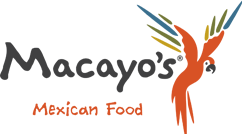 Blog
Blog 
Recents
Archive
Archives
- March 2021 (1)
- November 2020 (1)
- March 2020 (1)
- November 2019 (1)
- May 2019 (18)
- March 2019 (1)
- November 2018 (2)
- May 2018 (1)
- February 2018 (1)
- October 2017 (1)
- July 2017 (1)
- June 2017 (1)
- April 2017 (3)
- March 2017 (1)
- February 2017 (1)
- January 2017 (1)
- September 2016 (2)
- August 2016 (1)
- July 2016 (3)
- June 2016 (3)
- May 2016 (2)
- April 2016 (1)
- March 2016 (2)
- February 2016 (4)
- January 2016 (3)
- December 2015 (5)
- November 2015 (11)
- October 2015 (13)
- September 2015 (12)
- August 2015 (11)
- July 2015 (11)
- June 2015 (10)
- May 2015 (14)
- April 2015 (14)
- March 2015 (11)
- February 2015 (8)
- January 2015 (2)
- November 2014 (1)
- October 2014 (1)
- September 2014 (3)
- July 2014 (1)
- June 2014 (1)
- May 2014 (1)
- April 2014 (1)
- March 2014 (1)
- February 2014 (1)
- January 2014 (1)
- October 2013 (1)
- December 2012 (1)
Spring Training Restaurants
In simple terms, chorizo refers to a spicy pork sausage that’s sealed in a casing made of animal intestines. There are many different types of chorizo, but perhaps two of the most popular are Spanish and Mexican chorizo. For the purposes of this post, we’ll focus on Mexican chorizo, its primary characteristics, and the various types of dishes in which it’s often used.
The History of Mexican Chorizo
It’s believed that chorizo as a whole has been around since Roman times, but Mexican chorizo was adopted a little later on, when it was adopted by Mexico from Spain. Today, it is very popular throughout Mexico and even some areas across the United States.
Characteristics of Mexican Chorizo
So, what makes Mexican chorizo different from other types of chorizo? For starters, it typically contains a liberally seasoned fatty sausage that’s ground or minced finely, rather than chopped, before put into the casing. It should be noted, however, that Mexican chorizo can be made from a number of different meats, including venison, chicken, and even turkey. Furthermore, the seasonings used in a Mexican chorizo are often more robust and spicy. This is typically what gives Mexican chorizo a dark or bright red color in appearance, as opposed to a more subdued brown color in Spanish and other types of chorizo. In some parts of Mexico, it is even possible to find “green chorizo,” which has a green color due to the heavy use of cilantro in its making.
Another major difference between Mexican and Spanish chorizo is that the Mexican version typically comes uncooked and raw, whereas Spanish chorizo is typically sold ready-to-eat.
Dishes Using Mexican Chorizo
There are all kinds of dishes that incorporate Mexican chorizo, ranging from Mexican breakfast foods to appetizers, dinners, side dishes, and everything in between. For starters, you can easily make chorizo tacos by simply removing the meat from the casing and crumbling/browning it in a skillet over medium heat. However, it is also quite common to use chorizo in Mexican soups, as the meat can add a wonderful amount of flavor and spice to a soup base without the need to chop up lots of additional ingredients or add many spices.
For those looking for Mexican breakfast dishes that incorporate chorizo, there is always the very popular egg dish known as Eggs a la Paloma. This dish incorporates eggs scrambled with tomato sauce; chorizo is added for spice and heartiness. The entire dish is topped off with a melted pile of cheese on top for a delicious and unique taste.
The possibilities for utilizing Mexican chorizo are pretty much endless, but the above ideas are just a few popular uses for this delicious and flavorful meat option that is absolutely unique to Mexico.
As you can see, chorizo has a pretty rich history not just in Mexico, but across the globe as well. If you haven’t ever tried Mexican or Spanish chorizo for yourself, you owe it to yourself to give it a try the next time you see it at the grocery store.







